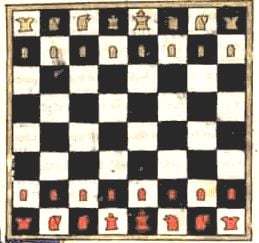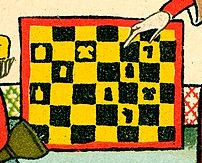Chess sets of the late thirteenth century
Several chess sets shown in publications from late thirteenth century France and Spain are the first where the king and queen depart from the early medieval forms that first came into Europe. The turned forms of the king and queen in these sets are indicative of the more elaborate kings and queens of later centuries, and there are innovations in both the rook and the knight.
The Bonus Socius chess set
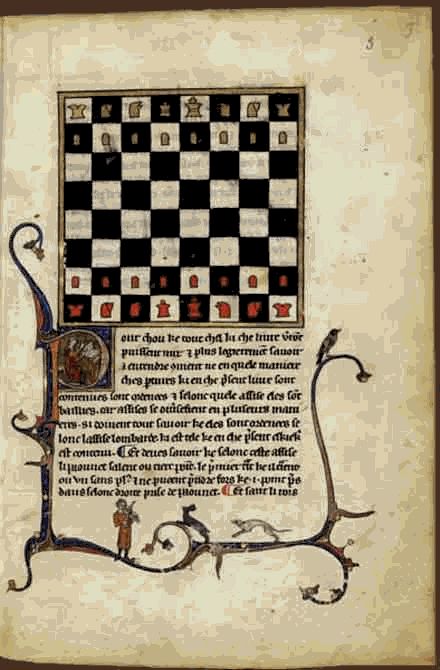
Bonus Socius (Good Companion) is an anonymous Italian manuscript on chess, tables (early variants of backgammon), and nine men’s morris, dated to the second half of the thirteenth century. The manuscript compiles chess problems from older sources, and is one of two produced in Italy at the time. The other, titled Civis Bononiae (For the People of Bologna) has a similar chess set.
Kings are turned, waisted with a central raised band, and have a central fleur-de-lis on the top. Queens are similar. but smaller and lacking the central raised band, and have a round ball on top. The bishop and knight are similar to early medieval forms. The rooks are similar to early medieval rooks but with a slightly waisted base, and are transitional between the early medieval form and the pedestalled form first found in the Alfonso set discussed below. Pawns are simple domes.
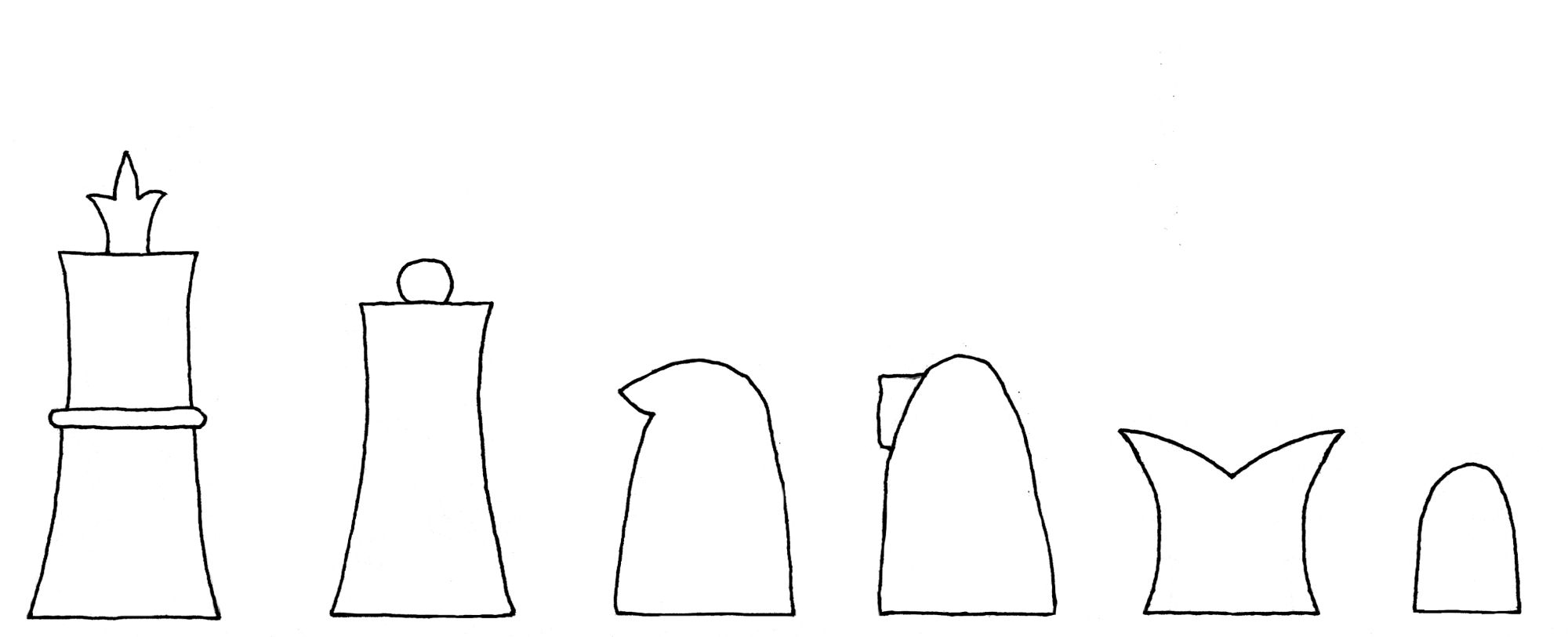
The Alfonso chess set
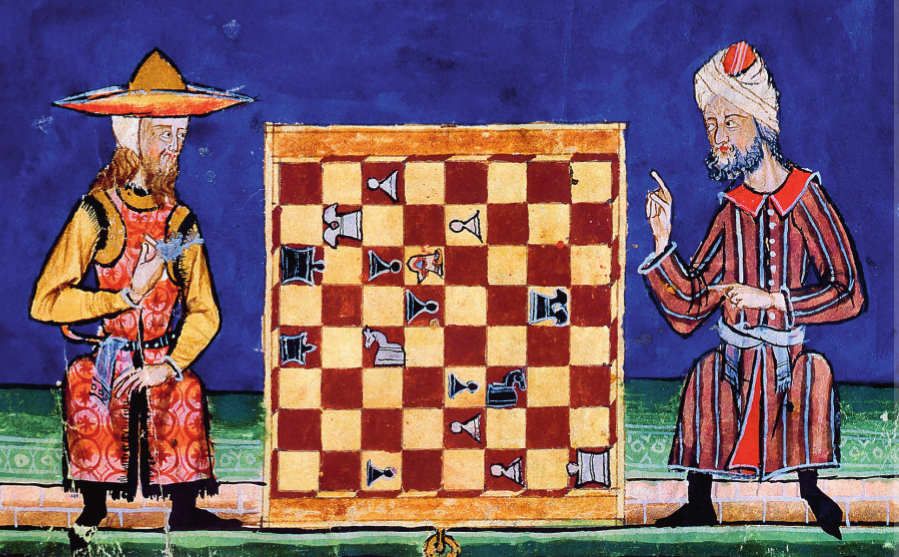
Alfonso X (1221–1284) was the cultured and educated King of Castile, León and Galicia from 1252 until his death. He encouraged the translation of Arabic texts into the native Castillian on subjects including music, astronomy and games. Libro de los Juegos (The Book of Games), published in 1283, added illustrations to the translated text, and covered nine men’s morris, alquerque, dice games, tables games and chess. The book’s illustrations of chess problems are clear, and sufficiently detailed to see the forms of the pieces. This example is typical:
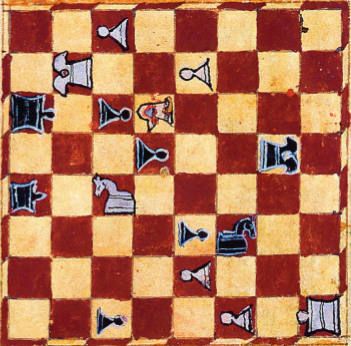
The two kings at f8 and a1 are turned, with a central incised band, basal and upper raised bands and a small central round ball. The queen at d8 is similar to the king, but smaller and lacking the central incised band. The bishop, at f5, is similar to other early medieval bishop forms, and is seen in profile with only one ‘tusk' visible, though most probably having two. Both knight and rook are placed on pedestals, in contrast to earlier forms. The knights, at c3 and d6, have a turned base with a carved horse's neck and head. The rooks, at e2 and g7, are similar to the medieval form, but probably with a turned base. Pawns are conical with a terminal ball.
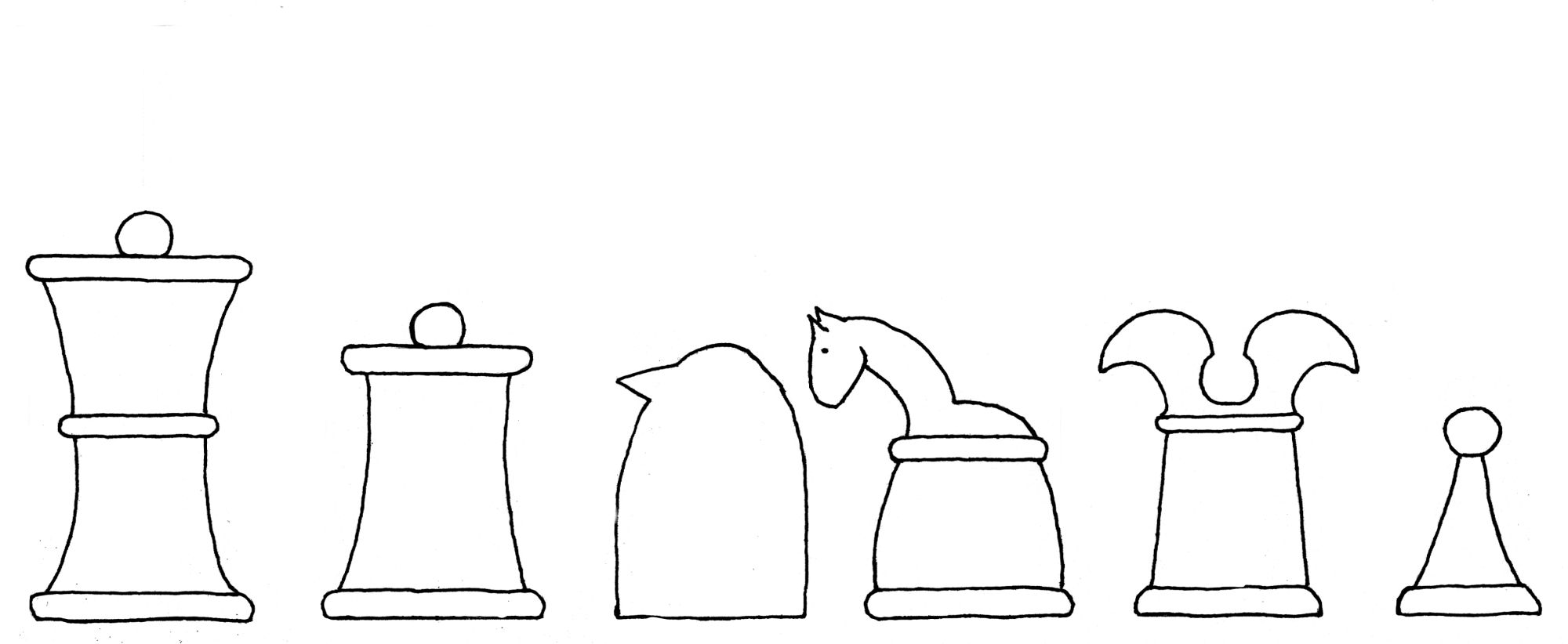
The Codex Manesse chess set
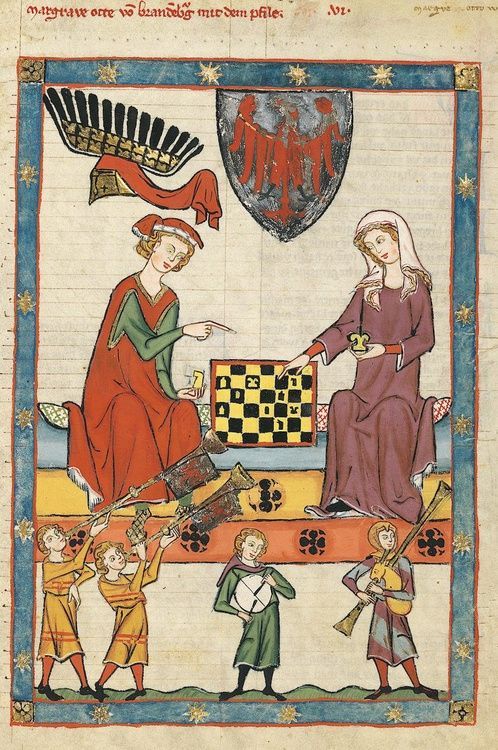
The Codex Manesse, a collection of Middle High German poetry produced in Zurich and written and illustrated around 1300 (completed 1340), depicts Margrave Otto IV of Brandenburg ( 1238–1308 or 1309) playing chess. The board, with only 6 x 7 squares, is yellow and black with a red border, typical of the polychromic tradition of this period. The pieces are few: one bishop, two rooks, one possible knight, one probable king, two possible queens and two pawns. The rooks and the bishop are similar to those of Alfonso (above), and the possible knight, though indistinct, is probably of the usual early medieval form. The king and queen are similarly indistinct, but may also have early medieval forms.
These three thirteenth century chess sets have in common kings and queens that are transitional between the early medieval forms and later, more complex, turned kings which appear in the later fifteenth century. In general the bishop, knight and rook are of the early medieval form, though the knight in the Alfonso manuscript is not symbolic, but takes the form of a horse's head, and is quite an extraordinary piece of art in itself. The Alfonso chess set also places the knight and rook on short pedestals, a construction feature that continues to the present day.

